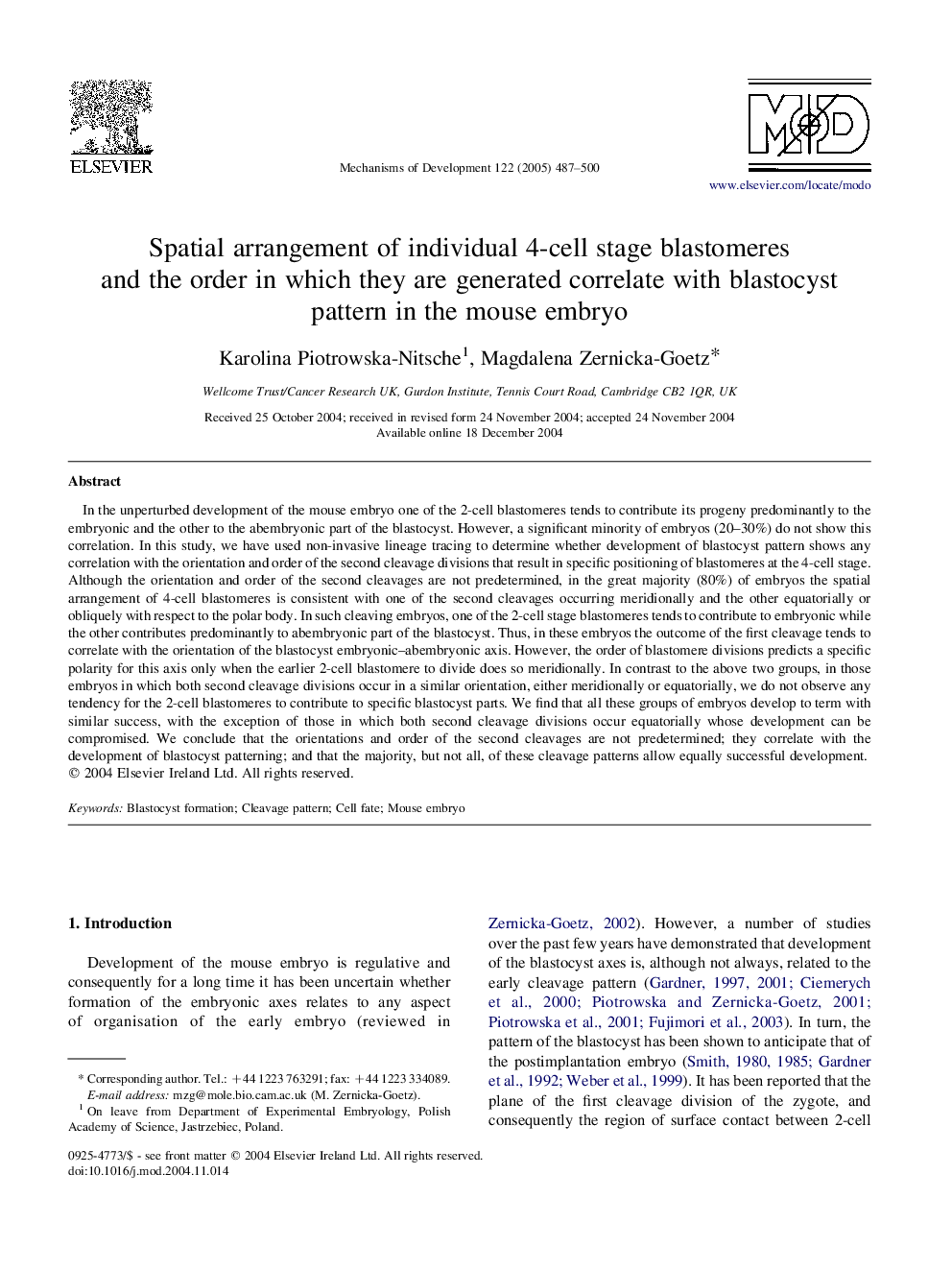| کد مقاله | کد نشریه | سال انتشار | مقاله انگلیسی | نسخه تمام متن |
|---|---|---|---|---|
| 9913663 | 1550643 | 2005 | 14 صفحه PDF | دانلود رایگان |
عنوان انگلیسی مقاله ISI
Spatial arrangement of individual 4-cell stage blastomeres and the order in which they are generated correlate with blastocyst pattern in the mouse embryo
دانلود مقاله + سفارش ترجمه
دانلود مقاله ISI انگلیسی
رایگان برای ایرانیان
کلمات کلیدی
موضوعات مرتبط
علوم زیستی و بیوفناوری
بیوشیمی، ژنتیک و زیست شناسی مولکولی
بیولوژی سلول
پیش نمایش صفحه اول مقاله

چکیده انگلیسی
In the unperturbed development of the mouse embryo one of the 2-cell blastomeres tends to contribute its progeny predominantly to the embryonic and the other to the abembryonic part of the blastocyst. However, a significant minority of embryos (20-30%) do not show this correlation. In this study, we have used non-invasive lineage tracing to determine whether development of blastocyst pattern shows any correlation with the orientation and order of the second cleavage divisions that result in specific positioning of blastomeres at the 4-cell stage. Although the orientation and order of the second cleavages are not predetermined, in the great majority (80%) of embryos the spatial arrangement of 4-cell blastomeres is consistent with one of the second cleavages occurring meridionally and the other equatorially or obliquely with respect to the polar body. In such cleaving embryos, one of the 2-cell stage blastomeres tends to contribute to embryonic while the other contributes predominantly to abembryonic part of the blastocyst. Thus, in these embryos the outcome of the first cleavage tends to correlate with the orientation of the blastocyst embryonic-abembryonic axis. However, the order of blastomere divisions predicts a specific polarity for this axis only when the earlier 2-cell blastomere to divide does so meridionally. In contrast to the above two groups, in those embryos in which both second cleavage divisions occur in a similar orientation, either meridionally or equatorially, we do not observe any tendency for the 2-cell blastomeres to contribute to specific blastocyst parts. We find that all these groups of embryos develop to term with similar success, with the exception of those in which both second cleavage divisions occur equatorially whose development can be compromised. We conclude that the orientations and order of the second cleavages are not predetermined; they correlate with the development of blastocyst patterning; and that the majority, but not all, of these cleavage patterns allow equally successful development.
ناشر
Database: Elsevier - ScienceDirect (ساینس دایرکت)
Journal: Mechanisms of Development - Volume 122, Issue 4, April 2005, Pages 487-500
Journal: Mechanisms of Development - Volume 122, Issue 4, April 2005, Pages 487-500
نویسندگان
Karolina Piotrowska-Nitsche, Magdalena Zernicka-Goetz,